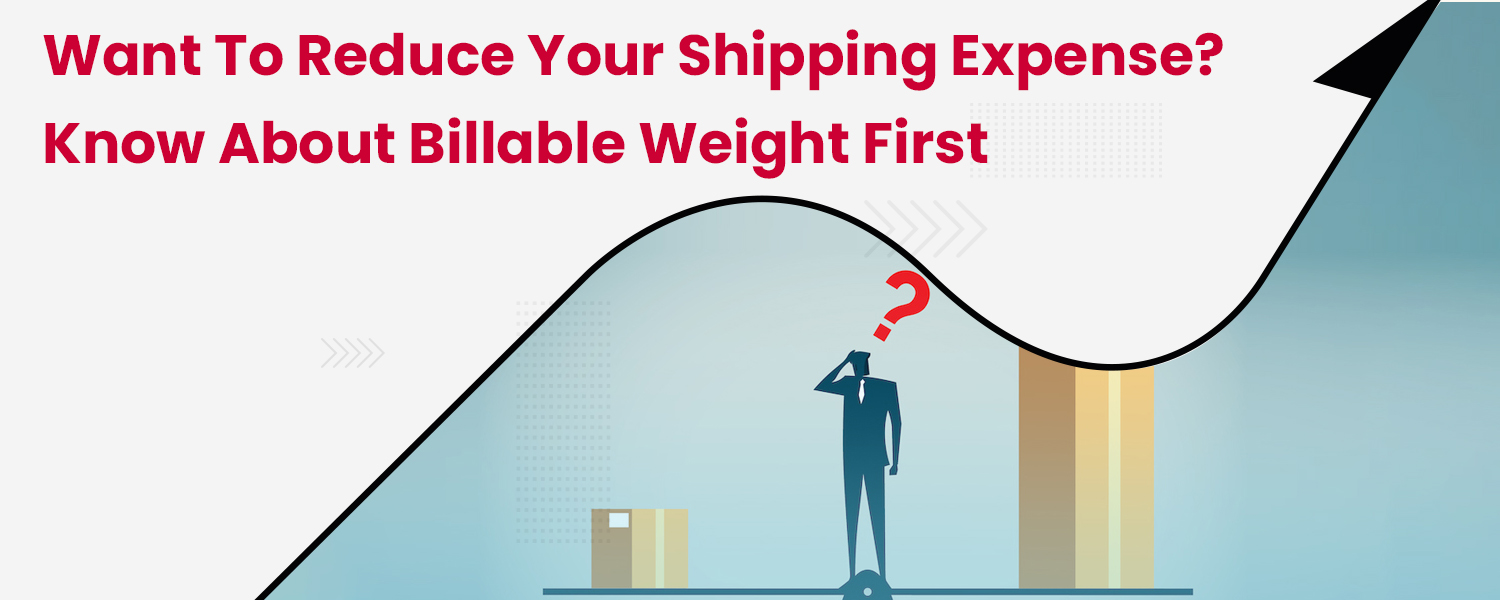Do you believe that eCommerce shipment weight always determines the shipping prices? Well, weight is one factor in determining the delivery cost. Along with actual weight, logistics providers consider “billable weight,” which is determined by some parameters, including the box’s dimensions or dimensional weight.
Learn what billable weight is and how it is calculated alongside tips to save shipping expenses in this blog.
What is Billable Weight?
Carriers use billable weight to determine the shipping price of every package, considering both the actual shipment weight and the dimensional weight. Whichever weight is higher is used as the chargeable weight for your package, which results in the final shipping fee.
History of Billable Weight
Until 2015, carriers calculated a package’s delivery fees based on its actual weight and transportation distance. After determining that this approach was ineffective for lightweight products that took up space and lowered the carrier’s capacity, they switched to chargeable weight for shipments.
Carriers frequently encountered the issue of shippers not optimizing their packing for smaller products because they were not paid for package dimensions. That is when carriers began factoring in dimensional weight when determining transportation prices. Dimensional weight calculations help carriers to account for both the weight and density of the package.
How is it Calculated?
To determine the billable shipment weight, you will require the package’s measurements in inches and the actual shipment weight. The following formula is used to determine the billable weight:
- (Length x Width x Height) / DIM
To fully grasp how billable weight is calculated, let us first examine how actual and dimensional weights are computed.
How is Dimensional Weight Calculated?
Dimensional weight is computed by multiplying the cubic volume of a package by a dimensional factor, often referred to as a DIM divisor. The following is a step-by-step procedure for calculating the package’s dimensional weight:
- Use the longest point of the measured height, width, and length of a package on each side
- Multiply the measurements to obtain the package’s cubic volume
- Divide the cubic volume by the DIM divisor of your carrier
How is the Actual Weight Calculated?
The actual weight is determined by weighing a package on a weighing scale, noting the weight, and then rounding to the next full pound.
Some Methods for Lowering Shipping Costs
With a deeper understanding of how billable weight is calculated, you can improve the shipping strategy of your business and lower your expenses. The following are some strategies for optimizing your chargeable weight and lowering your shipping costs.
1. Examine Your Packaging Alternatives
Among the common mistakes that business owners make is when shipping their products with incorrect packaging. While using boxes to carry all of your products may be less hassle for you, this technique may wind up being costlier for you, and it also results in a less than ideal consumer experience.
You may wind up using more shipping materials, such as dunnage, and different packing materials than you would if you used the proper packaging, which increases your shipping prices even higher.
By evaluating your packaging alternatives, you can be more deliberate about the packaging you select for each shipment, lowering your shipping costs and billable weight. However, tracking and forecasting transportation costs can be challenging when each shipment’s weight varies. However, a shipping aggregator like NimbusPost can assist in simplifying the procedure.
2. Change from Cardboard Boxes to Poly Mailers
Boxes have predefined dimensions that are not flexible and require adequate dunnage to ensure the products remain secure throughout shipment. If you deliver t-shirts and similar products in cardboard boxes, the packaging may raise dimensional shipment weight and increase your shipping charges.
Polybags or poly mailers are cost-effective for boxes for shipment, and they are compact and take up less space than a box. Poly mailers are adaptable and do not require extra dunnage for shipment, which is why fashion shops choose them since products are less prone to damage during transportation.
To assist businesses in shipping products efficiently, 3PLs provide standard poly mailers and bubble mailers in various sizes as part of their basic packing choices.
While not every product may be transported in a poly mailer, it is worth using mixed packaging to help you reduce billable weight.
3. Utilize Ship-in-own-container Packaging (SIOC).
SIOC is a product packaging method in which the consumer receives the goods in their standard packaging, without extra packing such as an over box. Not only does this save unnecessary packaging, but it also has the potential to save money by lowering the billable weight.
4. Associating with 3PLs or Shipping Aggregators
While there are ways to reduce billable weight and delivery costs on your own if you are already fulfilling orders in-house, collaborating with a 3PL can save you money and time.
3PLs maintain a diverse inventory of packaging solutions for you and have the experience to offer the optimal product packaging solution. You may be torn between multiple box sizes and void fill alternatives; therefore, having a competent 3PL that understands what they’re doing helps expedite, reduce, and streamline your shipment.
Bottom Line
Technology-enabled 3PLs provide insights into critical distribution parameters that you can employ to make educated decisions, such as the average cost of shipping. They collaborate with you to choose the optimal packaging solution for your products. Besides, they consider product integrity, purchase history, the customer experience, and delivery costs when making packaging recommendations. You may use the chargeable weight services of shipping aggregators like NimbusPost to save money on shipping.




